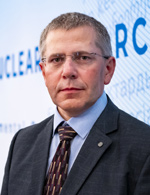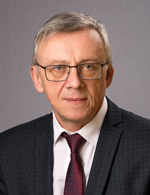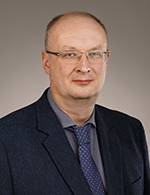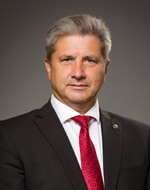
Veksler and Baldin Laboratory of High Energy Physics
The scientific activities of the laboratory are concentrated on the following trends of research: heavy ion physics at high energies, spin physics, as well as urgent issues of elementary particle physics related to checking of the Standard Model (SM), search for new physics beyond the SM borders and CP-violation.
The studies are conducted both at “home” accelerator facilities and in the largest accelerator centres: CERN, BNL, GSI, and others.
The laboratory staff members contribute much to joint research at the experimental facilities: COMPASS, NA61, NA62, STAR, CMS, ALICE, ATLAS, HADES, and many others.
A project was designed and has been under way of an accelerator complex at the laboratory. The complex includes the upgraded accelerator Nuclotron-M, a booster and the heavy nuclei collider NICA. Two collider facilities are being developed – MPD (Multi Purpose Detector) and SPD (Spin Physics Detector), as well as the set-up BM@N (study of Baryonic Matter at the Nuclotron) to investigate beams extracted from the Nuclotron.
The main aim of the NICA project is to conduct experimental research in extreme states of hadron (strongly interacting) matter in the domains of phase transitions. The research will be conducted at the interacting ion beams in the range of 4-11 GeV/n, at the polarized proton and deuteron beams (with longitudinal and transverse polarization), as well as at extracted ion beams, and polarized proton and deuteron beams.
The laboratory staff members are the authors of distinctive ideas to solve problems in accelerator techniques and technology of superconducting magnets that have been acknowledged and developed in largest accelerator centres of the world. The laboratory specialists are well-known for their elaborations of detector equipment. They made a considerable contribution to the development of experimental facilities at CERN, BNL, GSI.Now, in collaboration with leading specialists from these centres, they design detector systems for set-ups of the NICA complex, FAIR and the LHC facilities’ upgrade.
It is planned to establish a multi-access centre in the frames of the joint RF-JINR megaproject NICA to conduct research in relativistic nuclear physics and innovative and applied studies, employing uniquebeams of relativistic ions that are provided by the accelerators of thecomplex. The massive innovation potential is in the use of unique beams of the Nuclotron and the booster in radiobiological research and electronics testing, for the tasks to check the conditions for living organisms and equipment in strong space radiation. Facilities and new methods of ray therapy are developed for the medical-biological studies and treatment of oncological diseases.
The studies in the frames of the programme “Energy and Transmutation” are characterized as highly potential. They are aimed at the work-out of methods to rehandle (deactivate) nuclear energy industry wastes using accelerators, and the solution of the issue of electro-nuclear facilities’ development.














